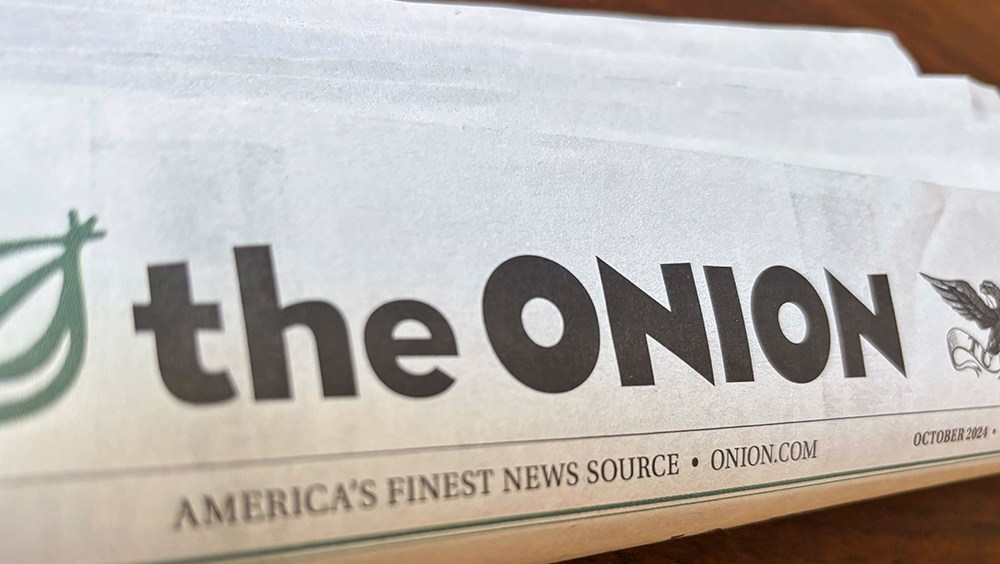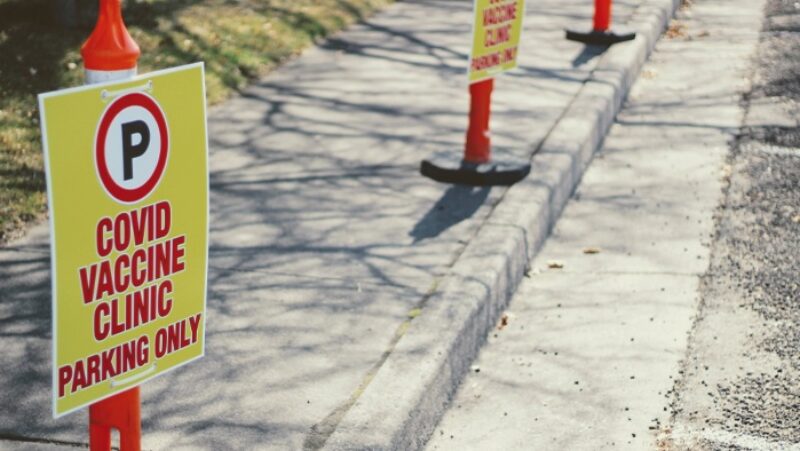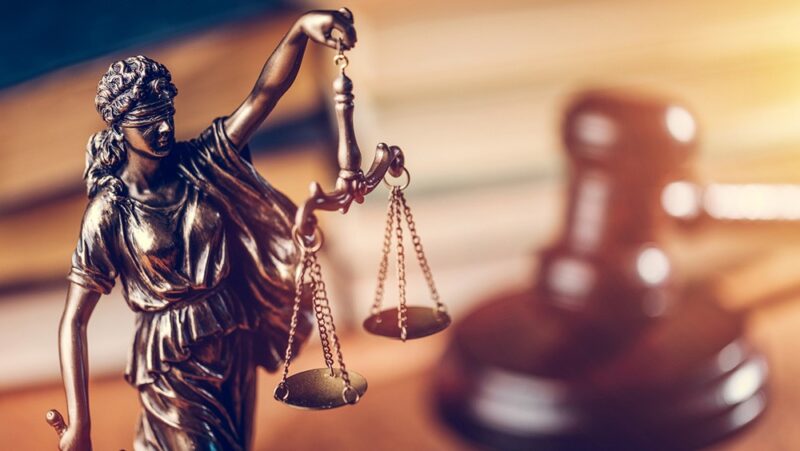Parody, Satire and the First Amendment

Imitation is not just the sincerest form of flattery, as the old saying goes.
When it comes in the form of parody and satire, imitation can also be a way to poke fun at people or cultural trends or to sharply criticize them. These forms of critique and commentary are as old as storytelling itself.
As forms of expression, parody and satire are often – but not always – protected by the First Amendment as free speech.
Learn how parody and satire are alike and different, how they are protected as free speech, and see examples of when spoofs have fallen outside First Amendment protections.
What are parody and satire?
Parody mimics an artistic work such as a piece of literature, music or film through comedic exaggeration. Parodies can poke fun while appreciating the original or can be harsher and mocking. One needs some knowledge of the original to understand the joke.
Examples of parody include the Austin Powers movie franchise, which spoofs the James Bond spy movies, and music by “Weird Al” Yankovic (pictured above), who writes humorous versions of famous songs.
Satire, on the other hand, takes humorous imitation to an absurd level, borrowing a style or trend to critique society at large. Satire is often darker and more biting than parody.
These styles can also overlap. They are not mutually exclusive, and a piece of expression could be one, the other, both or neither.
Examples of satire include The Onion and The Babylon Bee, which mimic news websites but are full of outlandish, made-up headlines that use extreme exaggeration to comment on news events, culture and society.
In 2022, The Onion filed a satirical but serious legal brief with the U.S. Supreme Court in support of an Ohio man who sued his local police department after he was arrested and tried for creating a social media site parodying the department. The man was acquitted of wrongdoing, but the court did not allow him to sue.
Are parody and satire free speech protected by the First Amendment?
Yes, the First Amendment protects free speech, including expressions of parody and satire to mimic and make fun of other artistic works or to criticize society.
The First Amendment provides strong protection for artistic expression and for social and political commentary.
Many comedy movies parody previously popular genres or tropes. For example, “Airplane!” from 1980 is a parody of earlier airplane disaster movies. “Galaxy Quest” from 1999 parodies “Star Trek” and other popular science fiction series. “Black Dynamite” from 2009 parodies the blaxploitation films of the 1970s. These and many more parody movies are all protected as free speech.
Movies and literature can also satirize society, providing commentary through extreme exaggeration and fictional situations that shine a light on what the author believes to be political realities.
“Fight Club,” “1984,” “The Handmaid’s Tale” and “Animal Farm” take perceptions of masculinity, government surveillance, religion and communism and subvert them by taking them to absurd extremes. These works are also protected as free speech, though the study of some satirical works of literature in public schools has been challenged.
Are there times when parody and satire lose free speech protection?
The right to free speech is not unlimited, and sometimes parody or satirical works have faced legal challenges or restrictions that do not violate the First Amendment.
Copyright and trademark violations
The most common way a parody or satirical work could be punished without raising First Amendment concerns is through copyright or trademark violations. Copyright and trademark laws protect creative works and business identifiers like logos from being copied without permission.
For example, in 2023, the Supreme Court ruled that a Bad Spaniels dog chew toy that mimicked a Jack Daniel’s whiskey bottle was not protected as parody. Despite the claims of the toy maker that the First Amendment protects its right to make this parody toy, the Supreme Court held that trademark law is more concerned with commercial issues like identifying the source of a product than the expressive aspects of the toy itself. The court ruled that selling the toy violated trademark law because it was so close to the original that people might confuse the dog toy as being created by the whiskey company.
RELATED: Free expression or infringement? 10 famous copyright cases to know
Similarly, trademark law bans using a living person’s name on a trademark without their permission, whether for parody or to support the person named. The Supreme Court ruled in 2024 that this means the phrase “Trump too small” cannot be registered as a trademark. The phrase can still be used on merchandise, but the person seeking the trademark cannot get government protection of the phrase for his exclusive use.
Satire borrows a style while commenting on society at large. In contrast, parodies specifically mimic material that is likely under copyright. As such, they are more likely to run afoul of copyright protections for their source material.
Typically parodies rely on the fair use exception to copyright protections. Fair use enables creative works to draw from copyrighted material if they transform the work and do not copy too much of it too closely. Courts weigh these and other set criteria, including the purpose of the new work, in determining fair use on a case-by-case basis.
The most important aspect of the fair use test is whether the new work is sufficiently “transformative” by building on the original work in a way that gives it new meaning.
The Supreme Court has addressed this issue in two cases. In the 1994 case of Campbell v. Acuff-Rose Music Inc., the court had to determine whether a parody version of Roy Orbison’s “Oh, Pretty Woman” by the rap group 2 Live Crew qualified as fair use. It said that parody is as much about expression as commercial gain. It further held that this particular parody demonstrated that it was primarily social commentary by starting with similar beats and lyrics as the original before departing into distinct sounds and comical lyrics that create new themes.
The Supreme Court addressed this also in Andy Warhol Foundation for the Visual Arts Inc. v. Goldsmith (2023). The case involved photographer Lynn Goldsmith and a picture she took of Prince in 1981. It was never published, but three years later, Condé Nast licensed the photo to have Andy Warhol create one of his distinct works of art for publication in Vanity Fair. Warhol actually made several images, and another one ran in Vanity Fair after Prince’s death in 2016 with the permission of the Warhol Foundation — but not Lynn Goldsmith. Goldsmith sued the Warhol Foundation, which argued that the paintings were a fair use of her underlying photo and could be reprinted without her permission. The Supreme Court said the Warhol pictures were not fair use despite their artistic nature. The opinion by Justice Sonia Sotomayor emphasized the need for a “transformative” use where the parody work clearly “comments on, criticizes, or provides otherwise unavailable information about the original.”
Receiving permission from the copyright holder of the original work is another way for parodies to uphold copyright.
Unprotected Speech
Works of parody and satire could potentially lose First Amendment protection if they fell into an unprotected category of speech, such as defamation, which is false information that harms someone’s reputation. This would be unlikely, as parody and satire are typically fictionalized exaggerations rather than claims of literal truth. Because of this, they often fail the requirement that the allegedly defamatory statement be an “assertion of fact.” In fact, there is a term for this type of parody or satire in the defamation context: rhetorical hyperbole. One example is the 1970 case of Greenbelt Cooperative Publishing Association Inc. v. Bresler, where the Supreme Court held that the use of the word “blackmail” to describe a real estate developer’s negotiating style was an over-the-top characterization rather than an actual allegation of criminal conduct.
Similarly, a parody or satirical work could face a challenge as intentional infliction of emotional distress, but this is a high bar, and a parody or satire would be unlikely to qualify.
On some occasions, public school students who create parodies of school officials may face consequences, though schools must show that the students’ speech is disruptive of class in order to punish it.
What are some examples of parody and satire that have been protected or not protected through U.S. history?
“Young Frankenstein”
The 1974 parody sequel to the Frankenstein movie series of the 1930s imitated the characters, story, visual style, cinematography, settings and scenes from the original Universal Pictures films – in some cases closely. But it exaggerated and transformed these elements into comedic mockery. There were no legal challenges to the movie.
1983 Hustler ad
Hustler magazine published a parody advertisement based on a real ad campaign but mocking the Rev. Jerry Falwell. Falwell sued for libel, invasion of privacy and intentional infliction of emotional distress. A jury awarded him $150,000 in damages for intentional infliction of emotional distress but ruled against Falwell on his libel claim, saying that the advertisement could not “reasonably be understood as describing actual facts about [respondent] or actual events in which [he] participated.” Hustler appealed the intentional infliction of emotional distress claim to the Supreme Court. It ruled in favor of Hustler on all counts because there was no false statement of fact made with actual malice, as required to prove libel or intentional infliction of emotional distress of a public figure.
“Amish Paradise”
Musical parody artist “Weird Al” Yankovic says he gets permission from artists before creating his parodies of famous songs. However, a miscommunication between Yankovic and rap artist Coolio led to a public disagreement about whether Yankovic had permission to parody Coolio’s hit “Gangsta’s Paradise” with the 1996 spoof “Amish Paradise.” But there were never any legal cases filed.
“The Cat NOT in the Hat! A Parody by Dr. Juice”
Dr. Seuss Enterprises, owner of “The Cat in the Hat” books, sued to prevent the publication of a satirical book that used the style, images and characters of the Dr. Seuss books. The satire was about the trial of O.J. Simpson, a former NFL football star who was tried and acquitted of the murder of his ex-wife and her friend. A federal appeals court ruled in 1997 that the satirical book was not a parody commenting on Dr. Seuss’ style or works; it was copying them without permission to draw attention to a book about an unrelated topic. It ruled the book violated copyright and trademark laws and could not be published.
“The Wind Done Gone”
A court initially blocked publication of “The Wind Done Gone” in 2001 after the estate of “Gone With the Wind” author Margaret Mitchell sued for copyright infringement. However, an appeals court ruled that the unauthorized sequel was a political parody and its use of Mitchell’s book as source material was legitimate. The parties later ended their case out of court in a private agreement, and the parody book was published.
Mock police Facebook page
In 2016, an Ohio man was arrested and charged with disrupting a public service because he had created a Facebook page mocking the local police department. He was cleared at trial and sued the police department in return, arguing that the arrest was retaliation for his free speech.
Satirical site The Onion submitted a brief urging the Supreme Court to take up the case and support the right to parody and satire. The Supreme Court rejected the appeal, leaving in place a lower court ruling that said the department is immune from the man’s lawsuit.
Babylon Bee lawsuit over California law
In September 2024, satirical site The Babylon Bee sued California over two new laws aimed at deepfakes because the text limits “materially deceptive content,” which the Bee claims could infringe on its free speech rights. A court put one of the laws on hold temporarily while another legal challenge of the law by a social media satirist plays out.
This report is compiled based on previously published Freedom Forum content and with the input of Freedom Forum experts. The editor is Karen Hansen. Email.
Perspective: Divided Court Considers Religious Exemptions to Vaccine Mandates
17 Freedom of Speech Court Cases You Should Know
Related Content
$30,000 Giving Challenge
Support the Freedom Forum’s First Amendment mission by Dec 31st and double your impact.

